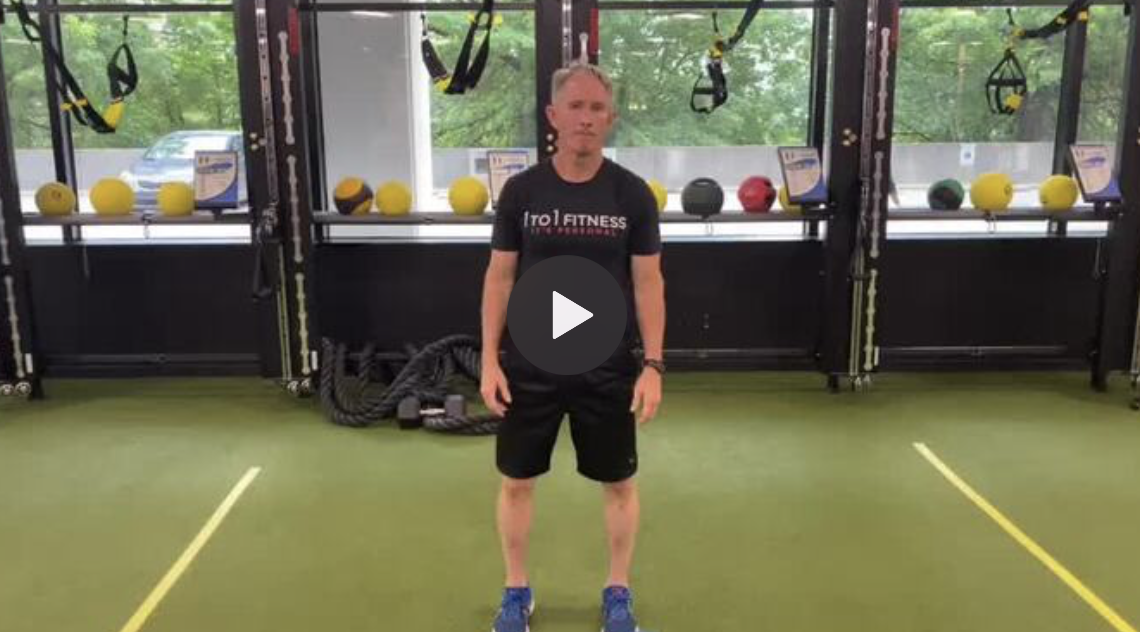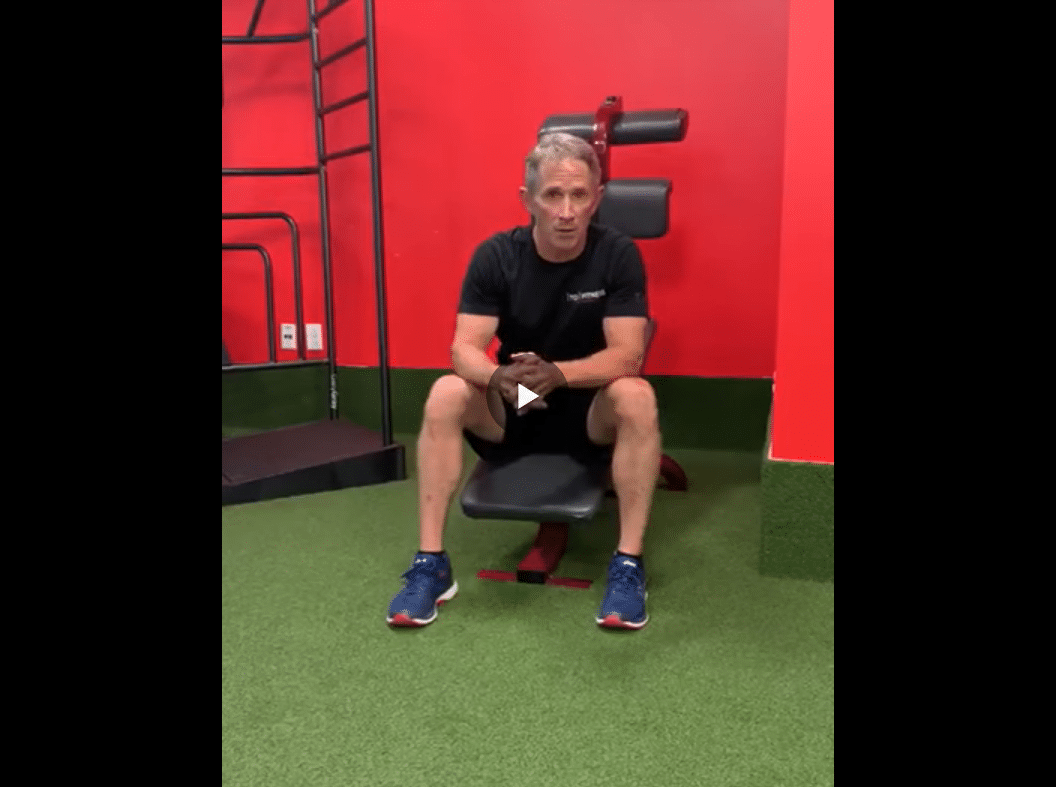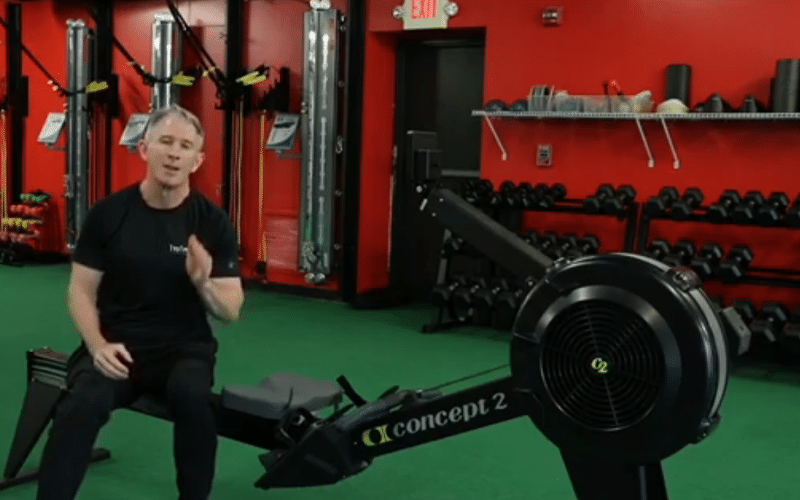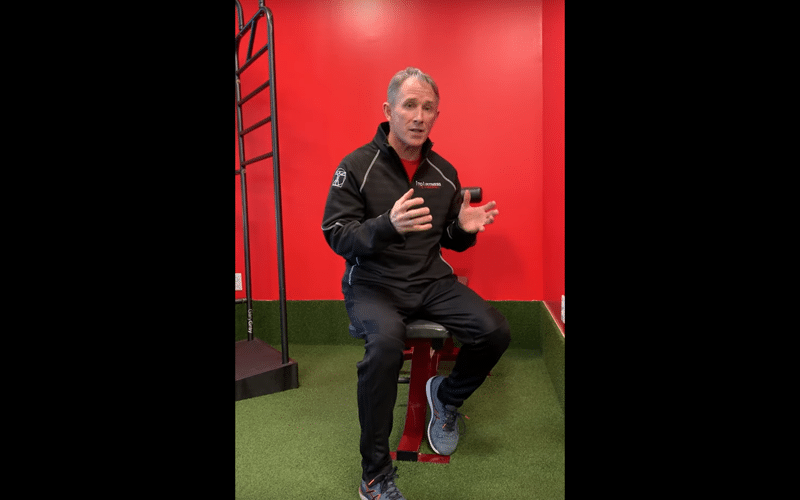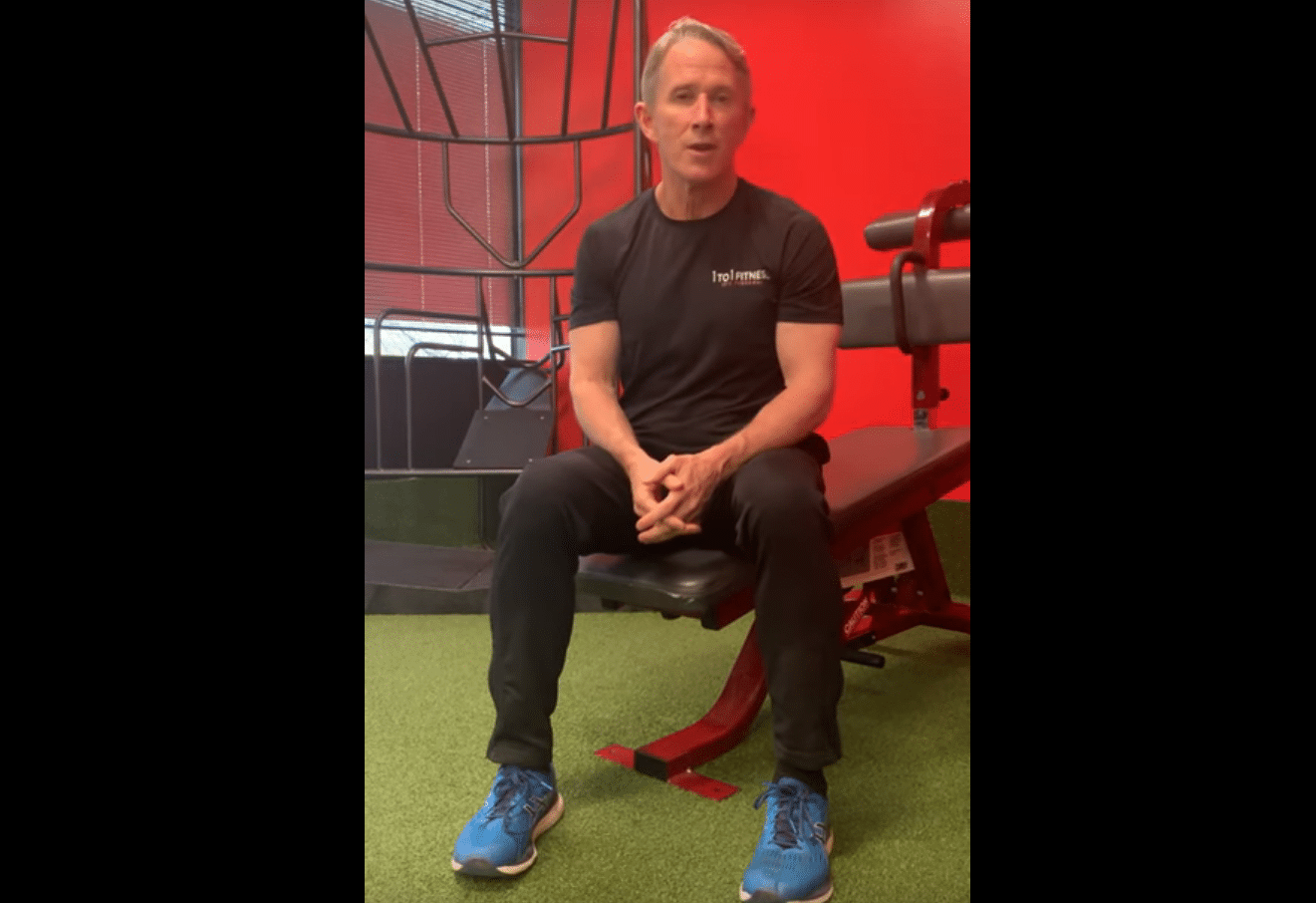Looking for variations for your abdominal workouts? Try the Dead Bug, a twist on a classic crunch. We know crunches can get tiresome, and provide a limited range of motion, so we’re going to try to get more bang out of the effort for you.
The Set Up:
Get on your back as though you’re getting ready to do a classic crunch. Now, bring your knees to your chest and flex your ankles. We want the knees to be right over the hips.
1st Variation:
You’re going to take two hands, put them on the knees and create some pressure. You’ll feel immediate engagement in your mid section. Now, imagine there’s a marshmallow in the small of your back. Crush that marshmallow as you engage. Start at about a 30% effort, breathing smoothly.
2nd Variation:
From the same position, take one foot and reach out. This means the pelvis has to move a little bit. Try to keep that “marshmallow” down.
3rd Variation:
Now, try one hand and one knee, keeping the opposite hand high overhead. Bring that knee up and take that down leg straight down. Engage the knee in the hand, and push, crushing that imaginary marshmallow. Now, take your long hand and lift it a half inch and lift your head a half inch. Now, life that leg. If you lose the marshmallow, keep your leg down and lower your head slightly.
4th variation:
Add the forced exhalation breathing technique at any stage of the dead bug, or even on your basic crunches. We have to give a shout out to our friends at ViPR for promoting this technique, which is really valuable. Go back to the basic dead bug position., engaging your knees to your hips and flexing your ankles. Now, crush imaginary marshmallow while taking in a reasonably good breath and force the air at.
Imagine you’ve got a straw and are blowing that air out with a bit of force. The important thing is getting to that last two or three seconds, when it feels like there’s no air in the system and you’re blowing it, emptying the lungs fully. It recruits deep respiratory muscles that happen to be spinal stabilizers as well.. Doing this at the beginning of your work workout actually sets up better stabilization for the rest of your workout as you go through.
That breathing technique can be used on a lot of exercises, but most commonly used in a simple crunch or in this case, dead bugs. So remember the imaginary marshmallow, crush it, small lifts of the head and arms on the different variations and start with moderate contractions and then build to bigger squeezes as you like, but always keeping the air flowing



